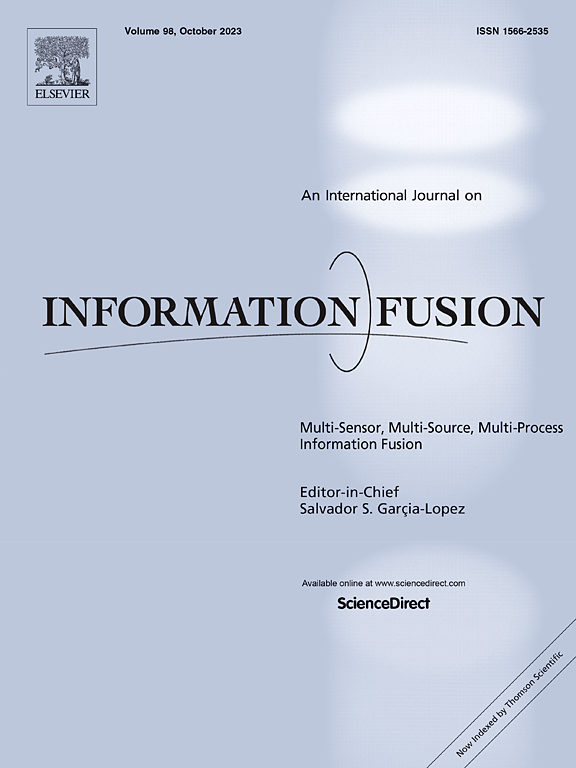Mixed-noise robust tensor multi-view clustering via adaptive dictionary learning
IF 14.7
1区 计算机科学
Q1 COMPUTER SCIENCE, ARTIFICIAL INTELLIGENCE
引用次数: 0
Abstract
Multi-view clustering (MVC) has received extensive attention by exploiting the consistent and complementary information among views. To improve the robustness of MVC, most MVC methods assume that the noise implicit in the data follows a predefined distribution. However, due to equipment limitations and transmission environment, the collected multi-view data often contains mixed noise. The predefined distribution assumption may not be able to effectively suppress complex mixed noise, resulting in a decrease in clustering performance. For solving the above problem, we propose a novel mixed-noise robust tensor multi-view clustering method (MRTMC) via adaptive dictionary learning. To accurately characterize the mixed noise, we consider mixed noise as a combination of structural noise and Gaussian noise and characterize both respectively. Specially, we design adaptive dictionary learning to accurately model structural noise containing semantic information and use Frobenius norm to constrain Gaussian noise. To fully mine the consistency among multiple views, we introduce a nonconvex tensor nuclear norm on the self-representation tensor to explore the high-order correlation among multiple views. Moreover, the weight of each view is learned through an adaptive weighting strategy. For solving the model, we develop an effective algorithm based on the alternating direction method of multipliers (ADMM) framework and provide the convergence guarantee of the algorithm under mild conditions. Extensive experimental results on simulated and real-world datasets indicate the clustering performance of the proposed MRTMC method is superior to the compared methods.
基于自适应字典学习的混合噪声鲁棒张量多视图聚类
多视图聚类(MVC)通过利用视图间信息的一致性和互补性而受到广泛关注。为了提高MVC的鲁棒性,大多数MVC方法都假定数据中隐含的噪声遵循预定义的分布。但由于设备的限制和传输环境的限制,采集到的多视点数据往往含有混合噪声。预定义的分布假设可能无法有效抑制复杂的混合噪声,导致聚类性能下降。为了解决上述问题,我们提出了一种基于自适应字典学习的混合噪声鲁棒张量多视图聚类方法。为了准确地表征混合噪声,我们将混合噪声视为结构噪声和高斯噪声的组合,并分别对两者进行表征。特别地,我们设计了自适应字典学习来精确地建模包含语义信息的结构噪声,并使用Frobenius范数来约束高斯噪声。为了充分挖掘多视图之间的一致性,我们在自表示张量上引入了一个非凸张量核范数来探索多视图之间的高阶相关性。此外,通过自适应加权策略学习每个视图的权重。为了求解该模型,我们提出了一种基于乘法器交替方向法(ADMM)框架的有效算法,并提供了算法在温和条件下的收敛性保证。在模拟和真实数据集上的大量实验结果表明,所提出的MRTMC方法的聚类性能优于比较的方法。
本文章由计算机程序翻译,如有差异,请以英文原文为准。
求助全文
约1分钟内获得全文
求助全文
来源期刊

Information Fusion
工程技术-计算机:理论方法
CiteScore
33.20
自引率
4.30%
发文量
161
审稿时长
7.9 months
期刊介绍:
Information Fusion serves as a central platform for showcasing advancements in multi-sensor, multi-source, multi-process information fusion, fostering collaboration among diverse disciplines driving its progress. It is the leading outlet for sharing research and development in this field, focusing on architectures, algorithms, and applications. Papers dealing with fundamental theoretical analyses as well as those demonstrating their application to real-world problems will be welcome.
 求助内容:
求助内容: 应助结果提醒方式:
应助结果提醒方式:


